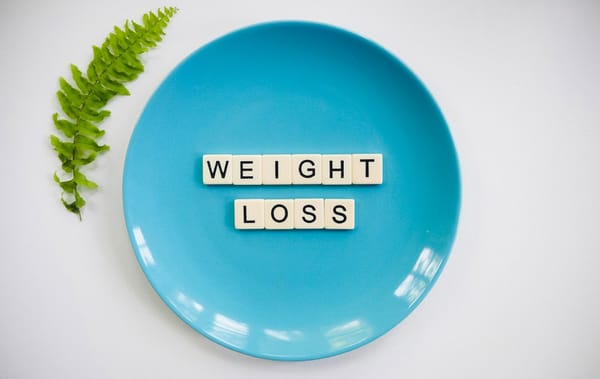TDEE for Athletes vs. Sedentary Individuals: How Much Should You Eat?

Have you ever found out why your buddy can smash a pizza without even blinking an eye, while you have just a slice and it seems like it's going to sit fat on your waist? It all comes down to Total Daily Energy Expenditure (TDEE), the calories you burn throughout the day.
This is where it becomes very interesting because the TDEE of an athlete truly varies greatly from that of a sedentary person, and it is this disparity that provides insight into getting your food intake accurately to maintain or reach your optimal body condition.
What Is Your TDEE?
Your TDEE is the total number of calories that your body uses in a day. It is determined by four main factors:
- Basal Metabolic Rate (BMR): The number of calories your body burns just to exist, including functions like breathing, blood circulation, and body temperature maintenance. In general, people with larger muscle masses tend to have a higher BMR.
- Physical Activity Level (PAL): The calorie burn resulting from every movement, comprising all heavy workouts or exercises and lighter activities like walking, standing, or climbing stairs.
- Thermic Effect of Food (TEF): Your body's ability to burn calories during digestion. Different macronutrients require different amounts of energy to be digested, with protein having the highest thermic effect.
- Non-Exercise Activity Thermogenesis (NEAT): The small movements you perform that aren't structured as part of an exercise, like wiggling your legs while you sit or even typing. Though they appear trivial, they contribute significantly to calorie burn over time.
Athletes: The Big Burners
If you are an athlete or a person involved in rigorous physical activity, your TDEE is quite high compared to someone sedentary. The reason for this is:
- Higher Muscle Mass = Higher BMR: Muscle is metabolically active, meaning it requires energy to maintain itself, unlike fat. Therefore, the more muscle mass you have, the higher the calories burnt at rest.
- Increased Calorie Burn from More Training Sessions: Whether it's weightlifting, running, swimming, or another form of exercise, regular high-intensity workouts contribute significantly to daily calorie expenditure.
- Greater Food Demand for Recovery: After an intense session, your body requires extra nutrients to repair muscle tissues, replace glycogen stores, and recover properly.
- More Efficient Calorie Utilization with an Active Metabolism: An athlete’s metabolism is more adaptive, efficiently processing and utilizing energy, allowing them to handle large amounts of food without storing excess fat.
Example: A professional swimmer who trains about six hours a day can have a TDEE of 4,000-6,000 kcal. That means they require significantly more food intake to maintain energy levels.
People with Sedentary Lives: The Low Burners
On the other hand, if you sit down a lot and engage in very little physical activity, your TDEE is naturally lower. Here’s why:
- Less Muscle Mass = Lower BMR: Without regular strength training, muscle mass tends to decrease over time, leading to a lower resting calorie burn.
- Minimal Physical Activity = Fewer Calories Burned: If your day consists mostly of sitting at a desk, driving, and watching TV, you’re not expending much energy outside of your BMR.
- Slower Metabolism = Fewer Calories Needed: With low activity levels, the body doesn’t require as much fuel, making excess calorie intake more likely to result in fat storage.
Example: An office worker who doesn’t exercise might have a TDEE of 1,800-2,200 kcal/day, less than half of what an elite athlete requires.
How Much Should You Eat According to Your TDEE?
Since TDEE varies greatly between active and sedentary individuals, their dietary requirements are also different.
- Athletes: Need a calorie surplus to fuel training, aid recovery, and maintain performance. Their diets should be rich in carbohydrates (to replenish glycogen), high in protein (for muscle repair), and include healthy fats for overall energy balance.
- Sedentary Individuals: Should focus on maintaining or reducing caloric intake, depending on their goals. Eating high-protein, fiber-rich, and nutrient-dense foods helps control hunger and ensures satiety without excessive calorie consumption.
Common Macronutrient Ratios
For Athletes:
- 50-60% Carbohydrates: Whole grains, fruits, vegetables, legumes.
- 20-30% Protein: Chicken, fish, eggs, lean meat, tofu, legumes.
- 20-30% Fats: Nuts, seeds, avocados, olive oil, fatty fish.
For Sedentary Individuals:
- 40-50% Carbohydrates: Lower than athletes to match energy expenditure.
- 25-30% Protein: Important for muscle retention and satiety.
- 20-30% Fats: Necessary for hormone regulation and overall health.
Can a Sedentary Person Eat Like an Athlete?
Short answer? Not unless they train like one. A sedentary person consuming 4,000 kcal a day without adequate physical activity will gain weight. The key is to match calorie intake with actual energy expenditure rather than eating based on cravings or habits.
However, if a sedentary individual starts incorporating exercise, even at a moderate level, they can slightly increase their caloric intake while maintaining a healthy weight. Small lifestyle changes, such as adding daily walks or short strength training sessions, can help improve metabolism and overall health.
The Role of Metabolism
Metabolism plays a crucial role in how we process calories. Some people naturally have faster metabolisms due to genetics, while others may experience a sluggish metabolism due to prolonged inactivity. Regular exercise, particularly strength training, can help boost metabolism and make it easier to maintain a healthy weight.
Practical Tips for Managing TDEE
For Athletes:
- Eat enough to support training and recovery.
- Prioritize nutrient-dense whole foods.
- Stay hydrated and monitor electrolyte intake.
- Periodically adjust calorie intake based on training intensity.
For Sedentary Individuals:
- Move more throughout the day – take breaks from sitting.
- Focus on portion control and mindful eating.
- Prioritize protein and fiber to stay full longer.
- Reduce empty-calorie foods like sugary drinks and processed snacks.
Conclusion
Calories aren’t one-size-fits-all. Athletes require extra fuel to support peak performance, while sedentary individuals need to monitor their intake to maintain a healthy weight. Understanding your TDEE is key to meeting your body's demands.
So, next time you see your gym-loving buddy devouring a giant burger post-workout, remember: it’s not just about what you eat, it’s about how much you move!



